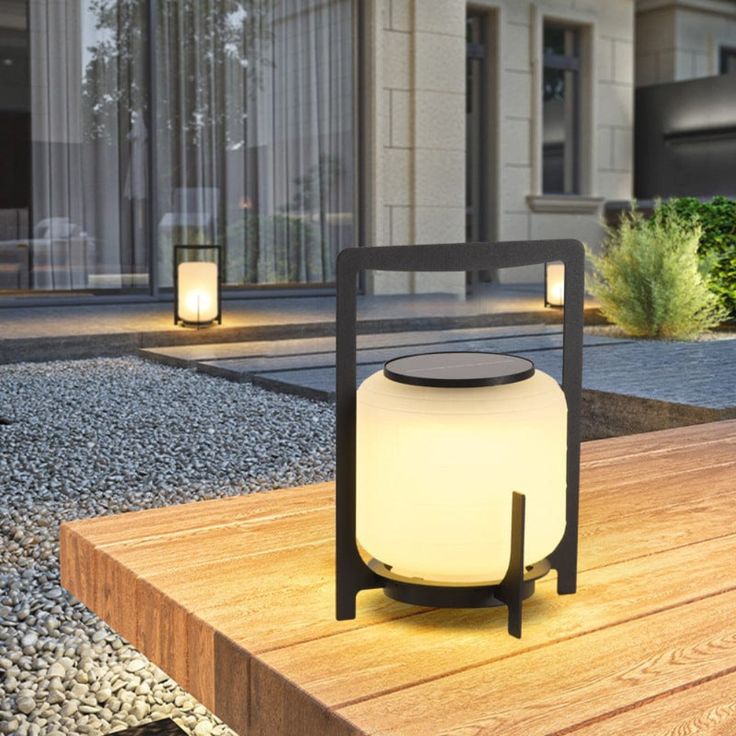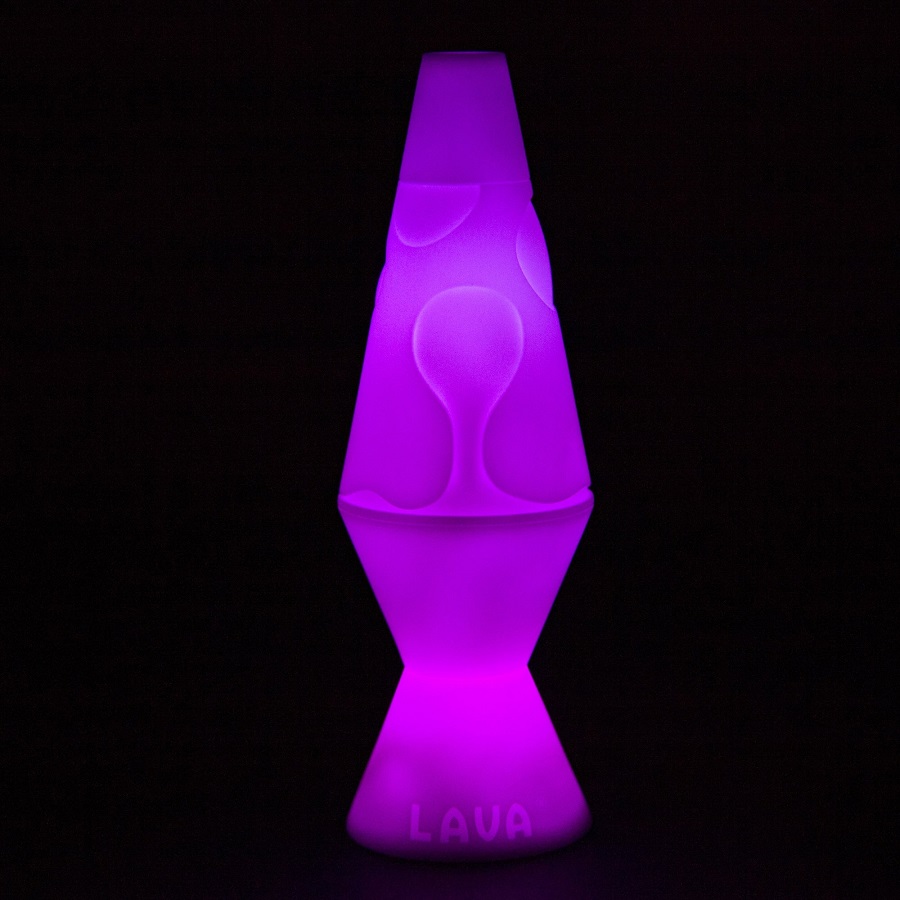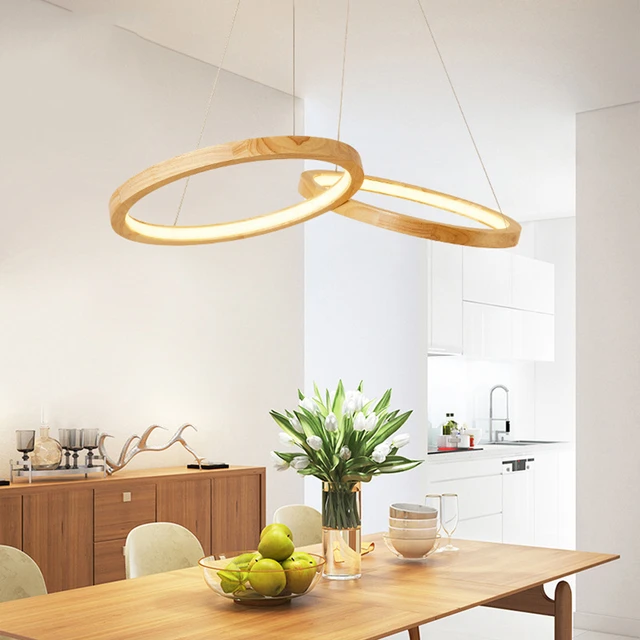 Introduction:
Introduction:
The dining room chandelier serves not only as a source of light but also as a significant design element that enhances the overall aesthetic of the space. However, finding the right height for the dining room chandelier can be a challenging task. In this comprehensive guide, we will explore the factors to consider when determining the ideal height for a dining room chandelier. By understanding these considerations, you can select and position your chandelier to create a visually pleasing and well-balanced dining area.
 Here are some common types of chandeliers:
Here are some common types of chandeliers:
There are various types of chandeliers available, each with its own unique design and style. Here are some common types of chandeliers:
Crystal Chandeliers:
Crystal chandeliers are perhaps the most iconic and traditional type. They feature multiple tiers of crystal prisms or glass ornaments that reflect light beautifully, creating a dazzling and elegant look.
Modern Chandeliers:
Modern chandeliers are characterized by sleek and contemporary designs. They often incorporate materials like metal, glass, or even unique materials such as acrylic or wood. Modern chandeliers are known for their clean lines, minimalistic shapes, and innovative designs.
Traditional Chandeliers:
Traditional chandeliers exhibit classic and ornate designs. They often feature candle-like or candelabra-style lights, intricate details, and decorative elements. Traditional chandeliers are typically made of brass, bronze, or other luxurious materials.
Rustic/Farmhouse Chandeliers:
Rustic or farmhouse chandeliers offer a more rustic and vintage-inspired look. They often feature materials like distressed wood, metal, and wrought iron. Rustic chandeliers are popular for a cozy and warm ambiance.
Mini Chandeliers:
Mini chandeliers are smaller versions of traditional chandeliers. They are designed to fit in smaller spaces or as accent lighting in specific areas. Despite their smaller size, mini chandeliers still provide an elegant and sophisticated touch.
Drum Chandeliers:
Drum chandeliers feature a cylindrical or drum-shaped shade that surrounds the light source. They come in various materials, such as fabric, crystal, or metal. Drum chandeliers offer a contemporary and refined look while diffusing the light evenly.
Sputnik Chandeliers:
Sputnik chandeliers have a distinct mid-century modern design inspired by the space-age aesthetic of the 1950s and 1960s. They typically have multiple arms extending in various directions, resembling a satellite or starburst shape.
These are just a few examples of the many types and styles of chandeliers available. Chandelier designs are continuously evolving, allowing individuals to choose the perfect one to match their personal style and complement the décor of their space.
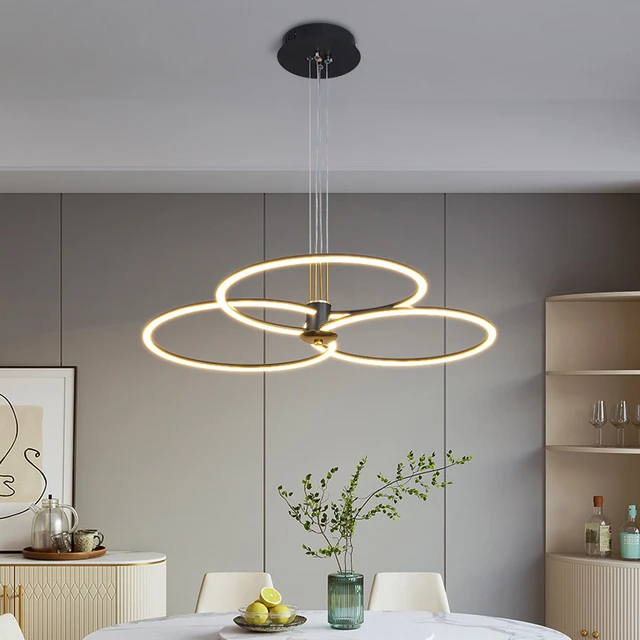 The Relationship Between Chandelier Height and Table
The Relationship Between Chandelier Height and Table
Table Shape and Size:
The shape and size of the dining table play a crucial role in determining the chandelier’s ideal height.
Rectangular tables may require longer chandeliers, while round or square tables often work well with a central fixture.
Diameter and Proportions:
Consider the diameter or width of the chandelier in relation to the table’s width.
Ensure that the chandelier is proportionate to the table size to create a visually balanced composition.
Determining the Hanging Height
General Recommendation:
A common rule of thumb is to hang the chandelier approximately 30-34 inches above the dining table.
This measurement takes into account average ceiling heights and allows for sufficient clearance while maintaining a pleasant visual effect.
Ceiling Height Considerations:
If your dining area has a higher ceiling, you may opt for a slightly higher hanging height to create a more dramatic look.
Conversely, lower ceilings may require a lower chandelier height to avoid a cramped or overwhelming appearance.
Finding the Right Balance:
Ensure that the chandelier is low enough to provide adequate illumination for the table without obstructing the view or causing discomfort for seated guests.
Aim for a height that allows for clear sightlines across the table and does not impede conversation.
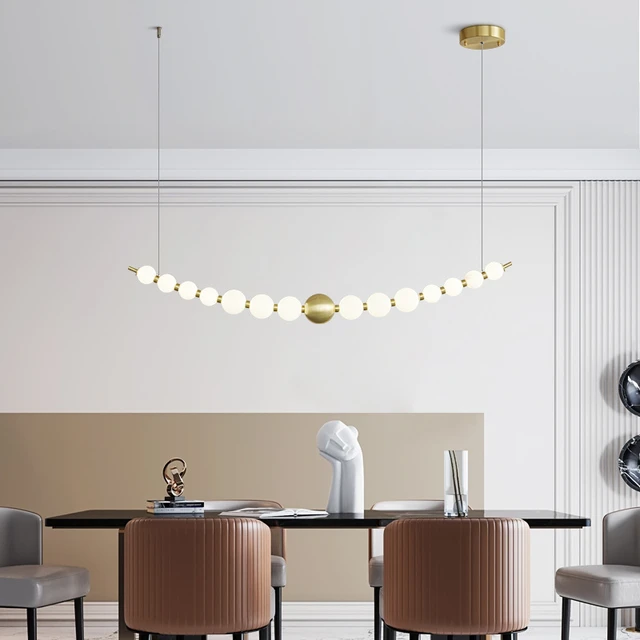 Optimal Light Distribution and Illumination
Optimal Light Distribution and Illumination
Light Spread:
Consider the different types of illumination required for the dining table.
A chandelier that spreads light evenly across the entire table surface will enhance the dining experience.
Avoid Glare:
Position the chandelier at a height that prevents glare, ensuring that the light does not directly shine in the eyes of seated guests.
Using dimmer switches or layering lighting sources can provide flexibility in adjusting the chandelier’s brightness.
Supplemental Lighting:
Depending on the size of the dining area, the chandelier alone may not be sufficient to provide optimal lighting.
Consider incorporating additional light sources, such as wall sconces or recessed lights, to supplement the chandelier and create a well-lit dining space.
Taking into Account Design and Style
Ceiling Medallions and Fixtures:
If using a ceiling medallion or decorative fixture, consider the additional height it will add when determining the chandelier’s hanging height.
Ensure that the combination of the chandelier, medallion, and fixture does not overwhelm the overall design.
Design and Aesthetic:
The chandelier should complement the design theme and style of the dining room.
Consider the scale, material, and design elements of the chandelier to ensure cohesion with the room’s overall aesthetic.
Here are the general steps for installing a dining room chandelier:
Installing a dining room chandelier requires careful attention to ensure it is properly mounted and wired. Here are the general steps for installing a dining room chandelier:
Turn off the Power: Before starting any electrical work, turn off the power to the dining room circuit at the main electrical panel to avoid accidents or electric shocks.
Determine Mounting Height: Consider the size of the chandelier and the height of the dining table when determining the appropriate mounting height. A general rule of thumb is to hang the chandelier about 30 to 36 inches above the top of the dining table.
Assemble the Chandelier: Follow the manufacturer’s instructions to assemble the chandelier. This typically involves attaching the arms or branches and connecting any necessary wiring.
Attach Mounting Bracket: Install the mounting bracket or strap to the electrical box in the ceiling. Ensure that it is securely fastened and aligned with the desired location for the chandelier.
Connect Wiring: Connect the chandelier wiring to the corresponding wires in the electrical box. Typically, this involves connecting the black (hot) wire to the black wire, the white (neutral) wire to the white wire, and the bare copper or green wire (ground) to the grounding screw or wire in the electrical box.
Secure the Chandelier: Carefully lift the chandelier and hang it on the mounting bracket or strap. Use the provided hardware, such as screws or bolts, to secure the chandelier in place. Ensure it is level and stable.
Install Light Bulbs: Install the appropriate light bulbs in the chandelier sockets according to the manufacturer’s recommendations. Check that they are securely in place.
Restore Power: Turn the power back on at the main electrical panel and test the chandelier to ensure it is functioning correctly.
It is important to note that the above steps are a general guideline, and it’s recommended to consult the specific instructions provided by the chandelier manufacturer. If you are unfamiliar or uncomfortable with electrical work, it is highly advised to hire a licensed electrician to perform the installation. Safety should always be a priority when working with electrical components.
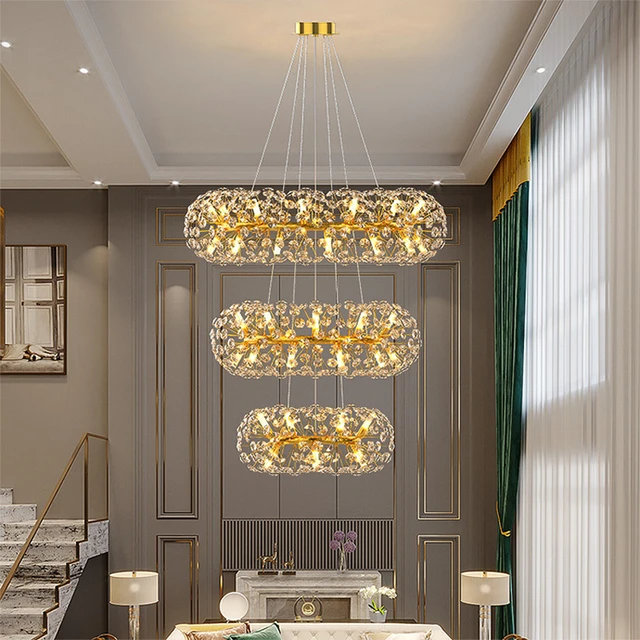 Conclusion:
Conclusion:
Selecting the right height for a dining room chandelier is essential to create a visually appealing and well-illuminated space. By considering factors such as table size, ceiling height, light distribution, and design aesthetics, you can determine the optimal hanging height for your chandelier. Striking a balance between functionality and visual appeal will enhance the dining experience and contribute to a harmonious overall design. Remember to evaluate the proportions, choose appropriate lighting sources, and adhere to design principles to create a stunning dining area that showcases your chandelier to its full potential.

